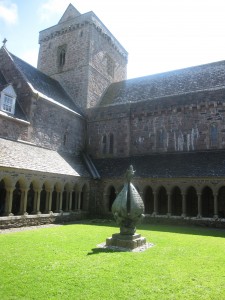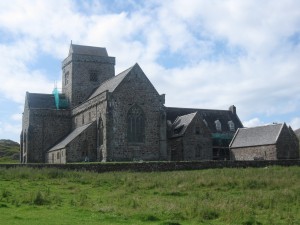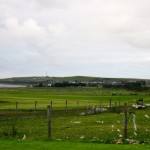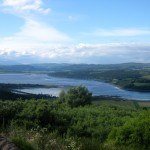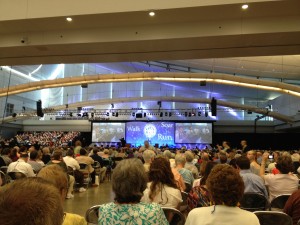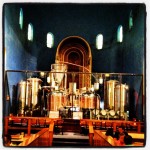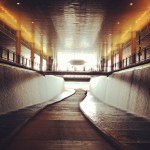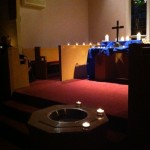I’ve always been a fan of new things. I’m often accused by family and friends of a preference to throw things out and replace them rather than getting them repaired, and their accusations are based in a good deal of truth.
All around Scotland, though, I’ve seen countless examples that might just change my mind. The old things that have survived here have an incredible beauty and usefulness that is noticeable and wonderful. Old castles and churches still stand after hundreds of years. Some foundations that date back well over one thousand years are still being used to support more recent construction.
The sense of history and place that results from this is incredible. Yesterday I worshiped in a church building that has stood in one way or another in this place for well over twelve hundred years. As we received bread and wine at communion, I felt strangely and wonderfully connected to countless saints of the centuries who have shared this feast so many times before in this very place.
However, what is even more amazing to me is the ways in which so many of the wonderful old places I have visited in Scotland have been adapted to fit changing needs and times. During the Reformation era, many of these churches were cleaned of their “popish” tendencies, with stained glass and icons removed and the buildings made far simpler. In more recent times, many of these buildings have been adapted once again to fit the changing needs and context of the church. In St. Giles’ Cathedral (the High Kirk of Edinburgh), the four “wings” of the church that once housed separate chapels now face the central area of the building where the communion table and pulpit are now housed. In the Abbey Church on Iona, the ruins of an ancient abbey have been reconstructed to house a modern transient monastic community that encourages an engaged spirituality with a center on this small, remote island and yet with a strong sense of presence in the everyday life of elsewhere. Even in the old castles at Edinburgh and Stirling, we saw evidence of how the castles changed over the centuries, first with changing tastes of individuals and generations and later with their repurposing as more modern military compounds.
I think I’ll leave my second visit to Scotland with a better sense of how space can be adapted and adjusted to meet these kinds of changing needs. I don’t think I’ll change my attitude toward the old substantially, as I suspect I’ll still prefer new things to the old. Still, maybe I can be less inclined to replace what can be repaired, out of a heightened awareness of the past and an attention to the limited resources that we have for the future. I think our culture can benefit from a bit more of this – a better sense of the importance of place, a stronger hope for repairing rather than replacing what is broken, and an attention for the future that builds on the best of where we have been and seeks only to make it stronger.
